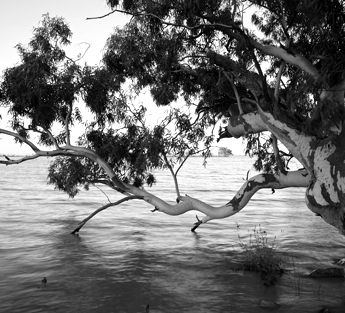Murray-Darling dams near full
 Murray-Darling Basin dams and catchments are nearly full, and its management authority says high flows are likely to continue.
Murray-Darling Basin dams and catchments are nearly full, and its management authority says high flows are likely to continue.
As of August 8, Hume Dam is at 95 per cent, Dartmouth Dam at 97 per cent, Lake Victoria is at 62 per cent and the Menindee Lakes are at 115 per cent capacity.
Strong flows of up to 53 gigalitres a day continue to enter the Murray from the Murrumbidgee River, the Goulburn River and the other Victorian tributaries.
“Although rainfall eased off somewhat in the past couple of months, we're approaching what is typically the season of highest inflows, and the Bureau of Meteorology is also forecasting a 50 per cent chance of another La Niña developing later this year,” says Murray-Darling Basin Authority (MDBA) river management director Andrew Reynolds
“At Hume Dam we have been in and out of flood operations for the past 12 months and this is likely to continue into spring. As always, we'll work closely with Bureau of Meteorology and WaterNSW, and will communicate any significant changes to communities downstream of the dam.”
The MDBA says it is looking at a range of management strategies, including potentially accessing water from the Menindee Lakes to fulfil demand in the Murray system as the year progresses.
“The fact that we did not need to draw water from the Menindee Lakes last summer underscores how unusual this long period of wet weather and high flows has been,” Mr Reynolds said.
“Given the high levels of water in storage, the risk of a shortfall in water delivery to entitlement holders this year is relatively low, however the risk could increase if conditions dry off and water demands ramp up quickly during a period of hot weather.
“It's also notable that substantial amounts of water for the environment will be delivered through the system this year, including to the Barmah–Millewa Forest, unless natural flows exceed environmental targets.”
The MDBA says its river operators respond to different conditions daily and adjust their strategies as the season unfolds.
Conditions are evaluated based on Bureau forecasts and advice, inflow data, predicted inflows and demands and historical records, to determine how to best manage the system.
More details are available in the authority’s Annual Operating Outlook.








 Print
Print